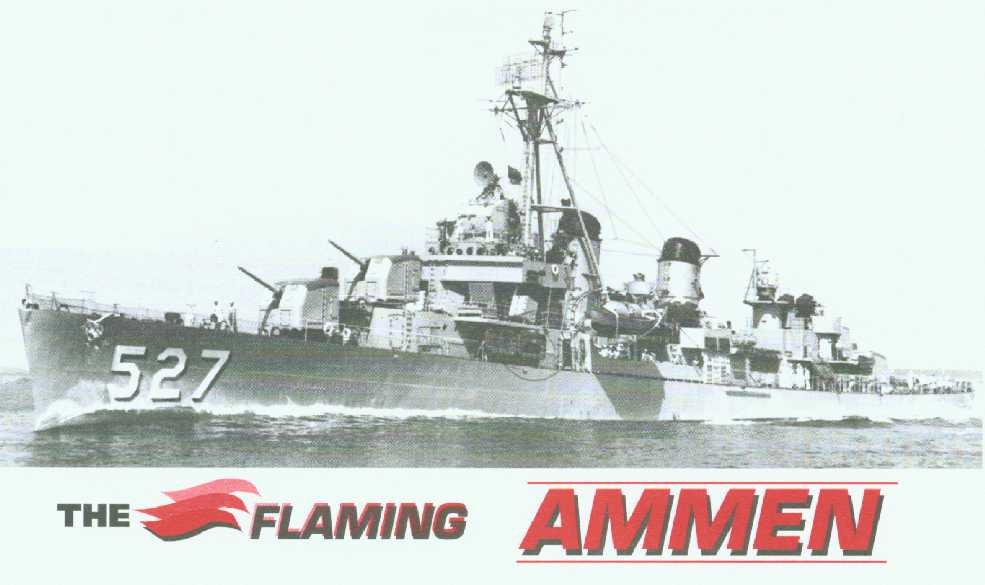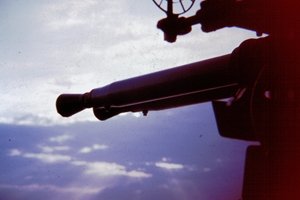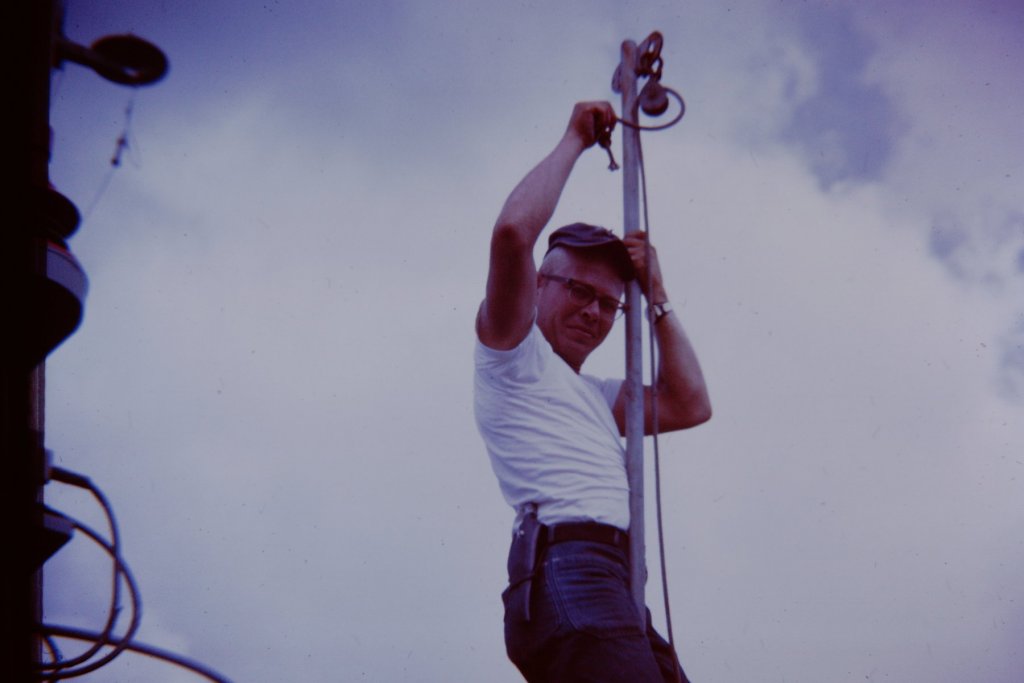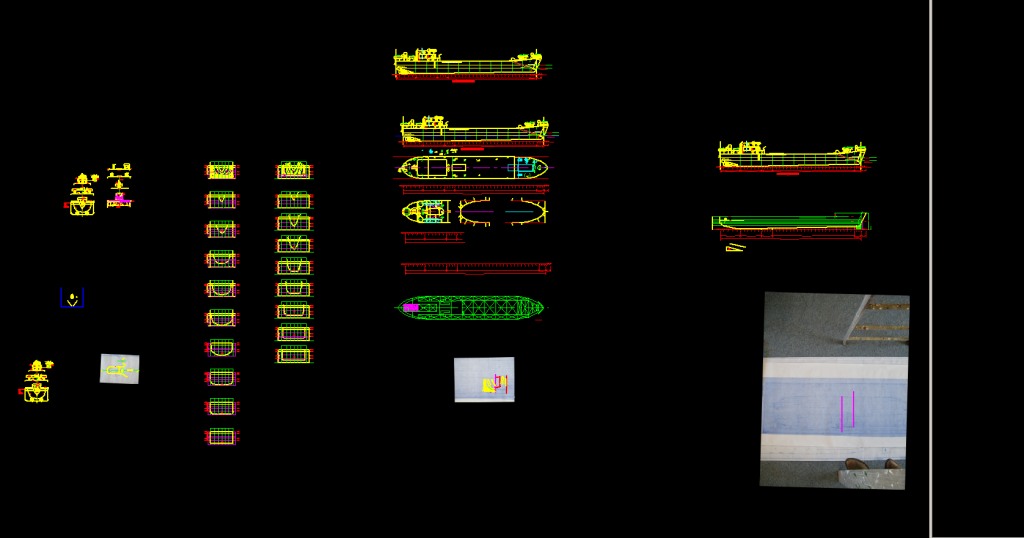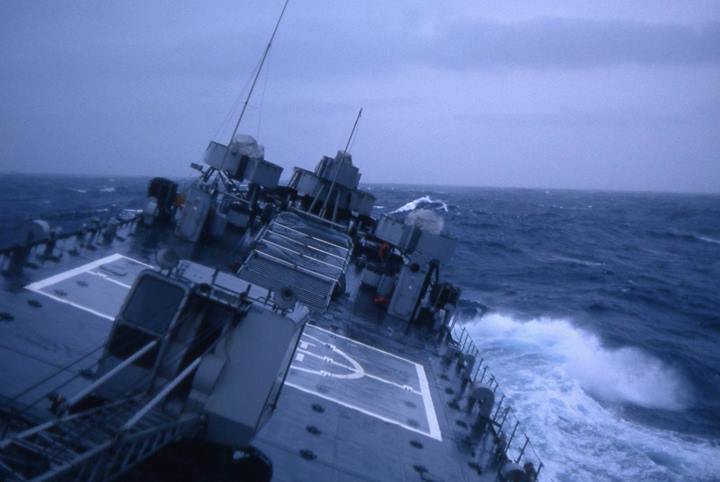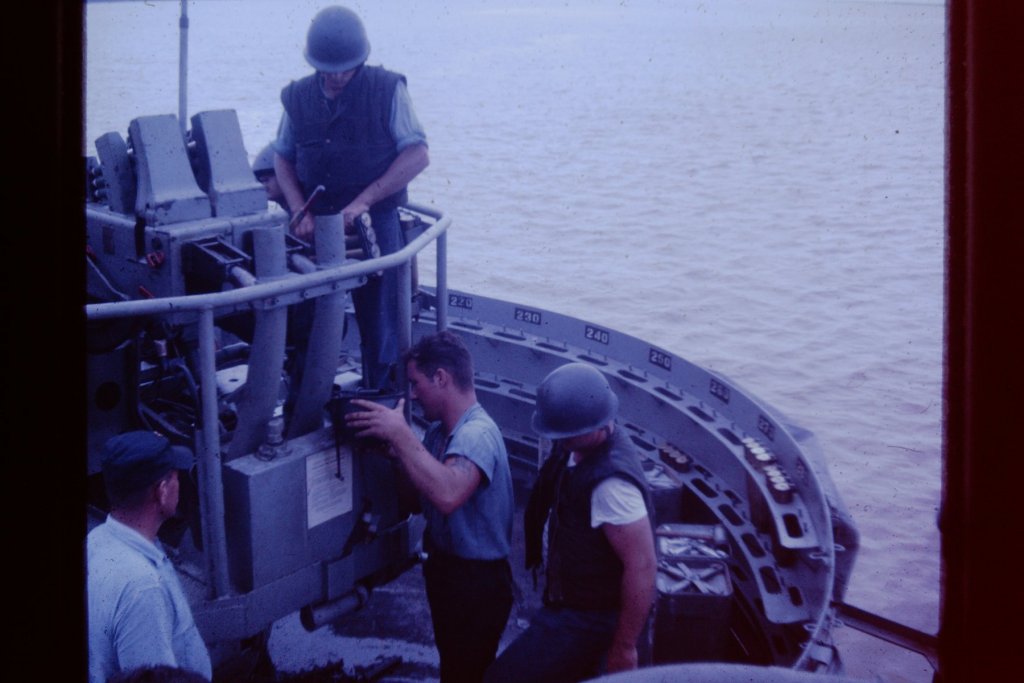-
Posts
1,171 -
Joined
-
Last visited
Content Type
Profiles
Forums
Gallery
Events
Everything posted by jud
-
When getting ready to let go, the anchor would have been hanging on the quick release only, the Cat lifting tackle would have been used to rig the quick release and then the anchor was lowered until it was suspended on the release chain, the Cat block would have then been lowered until the hook could be released and the whole rig secured out of the way. Should not be any lashings holding the anchor at this point except the Anchor Buoy which would have enough line to allow the Buoy to float at high tide while being secured to the anchor on the bottom. What we used for the Buoy was a 3"50 can, painted red with the tether line around it like the thread on a spool. It was held by a Seaman and tossed overboard when the anchor was let go, it spun the line off as the anchor fell, leaving the Buoy on the surface. Modern yes, something similar must have been done 200 years ago. heck it worked, why change anything but the materials.
-
Was a mechanical device that held the Anchor from the Cat, that could be released quickly, usually involving a chain and a rotating hook, sometimes it was just a sacrificial line that was cut with an ax. The Anchor could not let go when hanging from the lifting tackle on the Cat. Have found little about these vital devices, suspect there were many designs and methods. Aboard the Ammen DD 527 the anchor hung from a stopper equipped with a Pelican Hook that was released by striking it's holding clip with a sledge, enough drag on the brake was used to stop the run-out when the anchor bottomed so a pile of chain did not bury it. The details of anchoring using man power in the days of old seem to be few.
-
Some of us rode them, Mine was the USS Ammen DD 527. Photo of her in the configuration when I was aboard.
-
Rig one anchor and have it hanging from the Cat quick release toggle or a hank of line with an axe handy. Run the Hawser from the anchor around the bows and inboard through the Hawse hole and have about 4 fathoms to reach bottom and another 24 flaked out for the scope on deck for anchoring in 4 fathom deep water, bypass the Windless which has a toggle stop but no brake so using them to let go would be dangerous, when chains became common they required a Gypsy for the chain, the windless then needed refining with clutch's and brakes for that Gypsy and the chain remained around the Gypsy, the drums always turned when the mechanism was operating. That is how I have read it was done. Setting two or more anchors from the bows is asking for them to become fouled, unless another is set aft to prevent the ship from swinging in a tidal stream.
-
Heel and Head ropes in use.
-
Could be, have never seen any Sims Class Destroyers, I see on the net that 12 were built and commissioned in 1939-1940, all survived the war but were scrapped after the war, rate as 1500 Ton Destroyers, the Fletchers were rated at 2100 Tons. I jumped to conclusions that the vessels in the photo were DE's because of their single stack and raised foredecks. Photo from the net, it proves me wrong about the two vessels in that photo being DE's.
-
Those are DE's not DD's in the above photo, no Fletcher's in it. Now this is a Fletcher getting setup to bury her bows, square bridge but I suspect that the Fletcher's bridge was upgraded after entering service. The one I rode was the Ammen DD 527.
-

Harbor Freight Hardwood Workbench Kit Bash
jud replied to thibaultron's topic in Modeling tools and Workshop Equipment
Looks like you modified that bench to something that fits your needs and did it well. Have been considering buying one of those, it will be for a catch all room and I may not instal the vise. Probably will bolt it to the wall as a safety measure, something top heavy is bound to find it's way on top of it, always does. -
This is an interrupted thread Breech Plug. It is the Gas Check Pad that seals the Breech, it's protected and reinforced by the rings, Notice the cross section of the Mushroom, it moves rearward from chamber pressure because of the greater surface area, that means that if there is 50,000 pounds of chamber pressure against the face of the mushroom, there is nearly a 20 % larger force squeezing the Gas Check Pad forcing it out against the chamber walls, they are a heavy live rubber pad, it is that greater force than the chamber pressure that seals the breech, the passage being blocked, hot gasses don't act directly on the rings and pads to burn them. Good System, that is what the 8"55's aboard the Helena CA 75 used, was a GM in Turret 2. a couple of years, transferred up there from the 3"50's when I made E-4. Might be of interest, we fired those guns using 45-70 blanks sending a flame through the Stem and against the Black Powder ignition Pad sewn to the rear of the powder bags.
- 9 replies
-
- swivel guns
- cannon
-
(and 1 more)
Tagged with:
-
Makes no sense to me, as long as the compass will hold it's set, leave it alone would be my choice.
-

Getting a tight finish to a rope
jud replied to Marco R's topic in Modeling tools and Workshop Equipment
You can make some changes in your manufacturing process to tighten up the finished rope, sounds like you have researched and spoken with those who are in the know about how to do that. Listen to what you have been told and read some illustrated instructions and tighten up your finished product, the starting ends you speak of, don't make mountains out of nothing, tape the rope where it has started to come together as intended and cut the waste off when you again reach that part of the spool. Your rope looks like a fuzz bomb, should not be a problem, use some bees wax a piece of canvas and burnish your finished rope, 'might add some character' or run it through a clean gas flame and burn the fuzz off. Good Luck. If all else fails farm it out to someone who can provide what you need.- 14 replies
-
- syren ship model
- finishing rope
-
(and 1 more)
Tagged with:
-
One seldom thinks about Hay, but within all industrial City's or Port's that become crowded populate centers, Hay is the fuel that kept the Draft Animals working. Without that hay the citizens would need to move back into a rural setting, industry at a large scale would have disappear, replaced by the local Black Smith, Millers, Harness Makers and a few others there to support the rural needs, there would have been few laborers because the majority would be working on small holdings to feed themselves and selling only in small units. Hay is what fed and supported early industry. Like your work, surprising how that work reveals History seldom considered, is that your unspoken intent or is it one heck of a good accident. Looking forward to your next offering.
-

Straightening thin brass wire
jud replied to vossy's topic in Metal Work, Soldering and Metal Fittings
Set up some pulley's like the small ones to the left of this machine. I once had a job cutting wire for a electronics fabrication shop using a machine set up like this one except the chain making addition and it was much smaller, the wire I was cutting with the insulation trimmed was caught in a tray. The machine I used had 7 straightening rollers, and only one set of feed rollers where this machine has 2 sets. 2 that are easy to adjust and 3 adjustable only occasionally, it worked well straitening copper wire. Might be worth the fabrication time, don't need to be complicated, you could pull your wire through the rollers by hand. -
Makes one wonder if the plans are correct, suspect there is some artistic liberty being taken there someplace. A problem with modern man depicting what they think is true historical methods and practices. A Drawing, Painting or Model is interpreted as the creator see's in their mind, most having never experienced the condition and their vision becomes the accepted norm, even when logic and those with experience say nay, it is difficult to change minds of those with no hands on experience, they hold to the comfort of what they believed was fact, understandable, a human defense mechanism. I do see a lot of thought and effort on this site to depict true reproduction of what was, much research, thought and discussion go into many models in that effort to represent fact and progress is being made across the whole spectrum. Plain Table Platform over the Tiller of the Endeavor is a recent interpretation of a builder that has applied much thought and research to arrive at a logical use for such a crossover, changing an unrealistic abomination into a useful addition for Cook to use his Plane Table and Adelaide from, tools he was known to have and use for chart making, logical, but suspect it will be a hard sell because of the acceptance and entrenchment of the common crossover abomination.
-
A ship with any deck opening in a weather deck without combings might go to sea for trials, combings would be at the top of the list for addition upon the return to the shipyard to correct shortcomings. Deck openings all, regardless of use need to have provisions to prevent flowing water from going below, hence combings. As important, all deck openings need to have a method to be sealed against water inundating the lower decks from Storm or Sea. That means that hatch combings will have a method of being covered and sealed. That typically means clips, battens and wedges to hold the covers in place. Something modern man seems to have forgotten, seldom displayed in models and reproductions, but the actions of Storm and Sea is little changed over the years. Tiny details for models, overlooked for reproductions until flooding begins. Can overlook Batten Down Clips on combings for models unless the scale would require them to be in place, a deck opening without a combing is against all the experience of Seamen and spells 'wrong', when they see it.
-
South of Boardman, Oregon the Navy has a Bombing Range that started out as a WW 2 US Army Air Force bombing Range, still is in active use. In 64 I was running a John Deere 95 Combine like the one in the photo and in similar country on top and on the East side of Rock Creek. Navy often used to fly over as in your above painting and the pilots loved to buzz you. Usually could detect them and enjoy the flyover except for the one that caught me with my rear to the West on the crown of a hill he was skimming, set a record shutting down a 95 H when his shadow and engine noise struck at the same time, high heart rate for about 30 minutes. Think it was that shadow along with the sound that triggered that reaction, the shadow had not went over me during previous flyovers.
-
Black and White photos never depict the true Flash from large guns, Thought this did a good job and it's kind of pretty. https://www.facebook.com/photo.php?fbid=2219270511491795&set=gm.1970108069964847&type=3&eid=ARCQmbfZXMp_fP50ewUEhHzGLnpKTgwlCZz0UTECezAXb4Z5Gqzig_LBzDH5W_M-_6FqHEpYxihofxvb&ifg=1
-
Fully agree. I would expect to see a lot of small stuff being used around these guns when stowed for sea, regardless if the guns were inboard or protruding out a port with the doors open or a half port. Even in the 60's Navy, I found Small Stuff very handy to keep around, never was a problem cutting it loose to get out of the way. I would expect the Gun Tackle to be made up and held up off the deck using small stuff after flaking, coiling or just routed around gun and carriage to git it up and off the deck. Most carried knives just as it used to be, those topside when I was in the Navy carried knives, I carried 2, pocket knife in my pocket, a Stockman type and a Case or Buck on my belt in a leather case, in RVN I carried a Buck Sheath knife on my belt. can see it in the photo.
-
542 class LST working from imported photos, sized from known dimensions. Trial and error around curves then tested in another program. General Cad 10 and Traverse PC, software I used in surveying for comps and drafting. Have used 2D programs to obtain 3D coordinates by shifting x and y coordinated to different planes. Slow method and my computer lost the hard drive, just back up and running.
-
Having chased a fork lift back and forth in the Tank Deck of the Clark County LST 601. Also on several occasions called out of my rack to secure 8"55 projectiles sliding back an forth in the shell deck of Turret 2 aboard the Helena CA 75, Securing hardware were cables with cam over locks installed when the ship was built, that had stretched and wore to the point they could release themselves during rough seas and allow the projectiles to slide, fall over and set about knocking their buddies loose. We did use 1/4" sisal as insurance but constant working would also fail. Between the inner non rotating barrette and the outer barrette was storage for a single row of projectiles clear around the turret, access through a small door in the shell deck bulkhead, a hanging track with a truck riding on it equipped with a chain fall to handle those projectiles in the crowded space, the truck had a hand operated brake which would work loose and the truck and chain fall with its hook would end up rolling around and around on its endless track, sounded like a train, have to get a 6 X 6 timber from the repair locker and jam it in through that noted door to stop the thing, it often splintered that timber, but after the crash you could grab the rolling stock and get it secured. Have chased other items adrift at sea, I made a habit observing how items are secured at sea that I was around for self preservation, don't think the gun as shown is rigged for sea, needs more lashings and some wheel chocks, securing for sea is a big deal. I do like seeing more and more data being revealed about how things were done and questions asked, looks to me like quite a few modelers have surpassed the museums as the authority for research, making sites like this one a world treasure of information, not catalogs yet, suspect that is coming. Photo, replacing cooling water, left gun in use, often loaders would help load the opposite gun as this one is doing, the clip indicates which gun those 4 rounds are intended for. Time to get a crew working to rearm this gun mount.
About us
Modelshipworld - Advancing Ship Modeling through Research
SSL Secured
Your security is important for us so this Website is SSL-Secured
NRG Mailing Address
Nautical Research Guild
237 South Lincoln Street
Westmont IL, 60559-1917
Model Ship World ® and the MSW logo are Registered Trademarks, and belong to the Nautical Research Guild (United States Patent and Trademark Office: No. 6,929,264 & No. 6,929,274, registered Dec. 20, 2022)
Helpful Links
About the NRG
If you enjoy building ship models that are historically accurate as well as beautiful, then The Nautical Research Guild (NRG) is just right for you.
The Guild is a non-profit educational organization whose mission is to “Advance Ship Modeling Through Research”. We provide support to our members in their efforts to raise the quality of their model ships.
The Nautical Research Guild has published our world-renowned quarterly magazine, The Nautical Research Journal, since 1955. The pages of the Journal are full of articles by accomplished ship modelers who show you how they create those exquisite details on their models, and by maritime historians who show you the correct details to build. The Journal is available in both print and digital editions. Go to the NRG web site (www.thenrg.org) to download a complimentary digital copy of the Journal. The NRG also publishes plan sets, books and compilations of back issues of the Journal and the former Ships in Scale and Model Ship Builder magazines.



